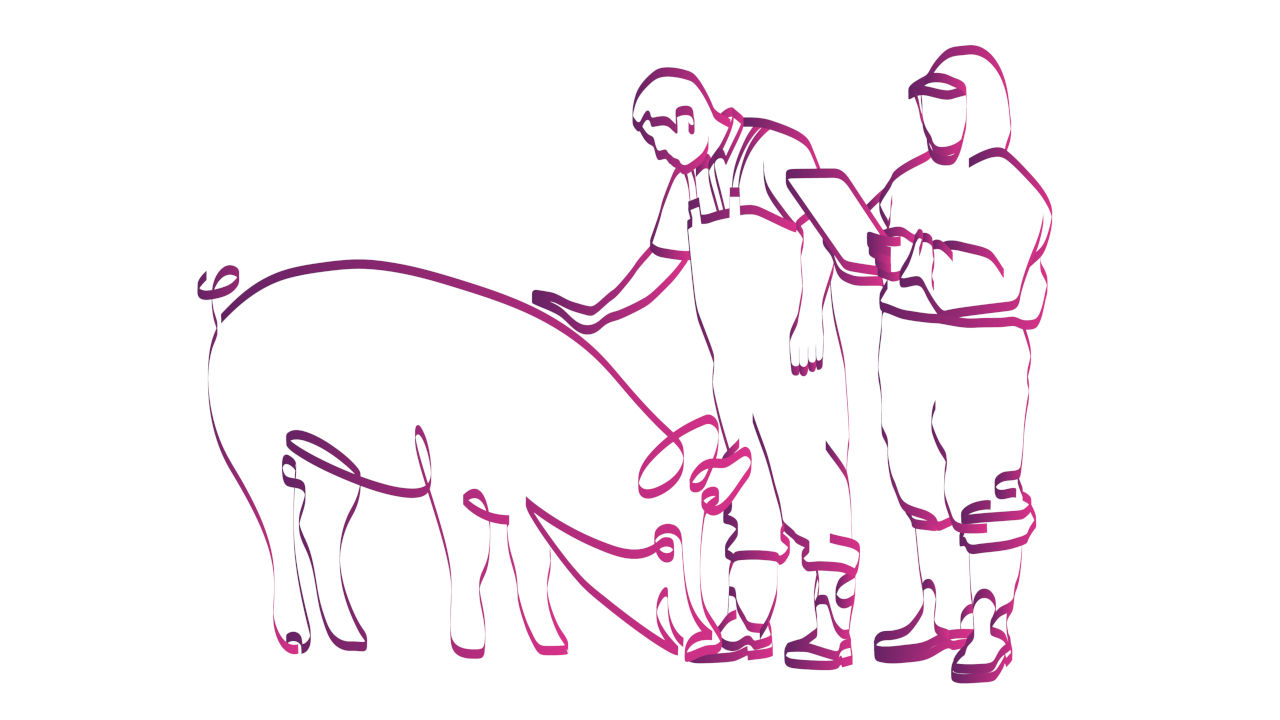‘I try to explain how a pig acts naturally in the forest’

Subject
Health of pigs
Target audience
Welfare inspectors
Inspector: Kirsten (56) from Denmark
The regulations are so numerous – we have a list that covers 25 pages – that for farmers it’s not always clear what’s expected of them. And even for us as inspectors the rules are not always unequivocal. The national legislation requires a sprinkler system in all pens – for cooling down in case of hot weather. But how these sprinklers actually need to be installed is not clear. As an inspector, you then need to look at the pigs and see if the goal of cooling down is sufficiently met.
Overall I don’t encounter great resistance when I visit a farm. The majority of the farmers work hard to keep things in order. But you also have to take into account that it’s almost impossible for famers to tick all the boxes. Especially the smaller farms struggle with the intensive administrative burdens such as the lists with medication and diagnosis per pig. On the bigger farms the work is carried out by more people. As for the small businesses, the farmer him- or herself needs to take care of all the pigs and the administration. For me it’s important to do the inspections in a holistic way: I do not close my eyes to non-compliance. But if I see a well-organized business with happy healthy pigs and the space in a pen with weaned pigs for example is 3.8 square metres instead of the regulation 4.0, that is not the end of the world. The most important thing is to comply with the legislation's intent. As an inspector it is in essence not my job to give extensive advice to farmers who don’t manage their businesses properly, but in practice I do try to make the effort to help them. In my experience it’s very important to inform the farmer about the natural lifestyle of pigs, if they were living wild in the forest, and their behavioural needs. There, these animals would spend 80 percent of their waking time rooting and seeking in the ground. If in a small pen you don’t offer them enough enrichment materials, they get bored and stressed and start tail-biting for example.
According to the legislation farmers are obliged to separate sick from healthy pigs, but how they organise the sick pen can make a big difference. Here too, I try to explain what a sick animal needs, just like an ill human being: quietness, a soft place to lie down comfortably, water and food close by and no competition with other pigs.
It is never my intention to lecture farmers. Obviously, my words don’t always resonate well, and I see eyes rolling from time to time. As an experienced farmer told me lately: “We are trying to improve all the time, but it’s not as quick as you want it to be.” That underpins the importance of taking the intention of the farmer into account.
I am also not afraid to share my personal experiences. I worked on a farm when I was young, and I tell farmers that I see how they have improved animal welfare. Forty years ago, it was normal to castrate pigs much older than we do now, and we used to tie them up by the neck in a pen. Unimaginable in 2021, but we need to stay vigilant to watch out for outdated standards. For example, on big Danish farms with a lot of East- uropean employees, we see that some keep trying to cure chronically lame pigs, while they should be culled.
As a tip to fellow-inspectors I would say: try to stay a little longer after the inspection is done. It is at these times that I have the most fruitful, open conversations, and the farmer is given the opportunity to ask questions too. Also educational for me. A little while ago, a young farmer explained to me how well his new interior design of pens worked: a corner to eat, a corner to play, a corner to rest. He had designed an enrichment bar that could service many pigs at a time. Again: just like human beings who like to keep these activities separated in their houses. That vision makes me happy – as he shows that he thinks about the animals behavioural needs, and I take his ideas with me in subsequent inspections.
